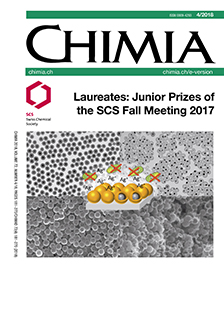Induction of Intracellular Reductive Stress with a Photoactivatable Phosphine Probe
DOI:
https://doi.org/10.2533/chimia.2018.241Keywords:
Photoactivation, Protein aggregation, Reductive stress, TributylphosphineAbstract
Reductive stress is a condition present in cells that have an increased concentration of reducing species, and it has been associated with a number of pathologies, such as neurodegenerative diseases and cancer. The tools available to study reductive stress lack both in selectivity and specific targeting and some of these shortcomings can be addressed by using photoactivatable compounds. We developed a photoactivatable phosphonium probe, which upon irradiation releases a fluorescent molecule and a trialkyphosphine. The probes can permeate through the plasma membrane and the photoreleased phosphine can induce intracellular reductive stress as proven by the detection of protein aggregates.Downloads
Published
2018-04-25
Issue
Section
Scientific Articles
License
Copyright (c) 2018 Swiss Chemical Society

This work is licensed under a Creative Commons Attribution-NonCommercial 4.0 International License.
How to Cite
[1]
Chimia 2018, 72, 241, DOI: 10.2533/chimia.2018.241.







